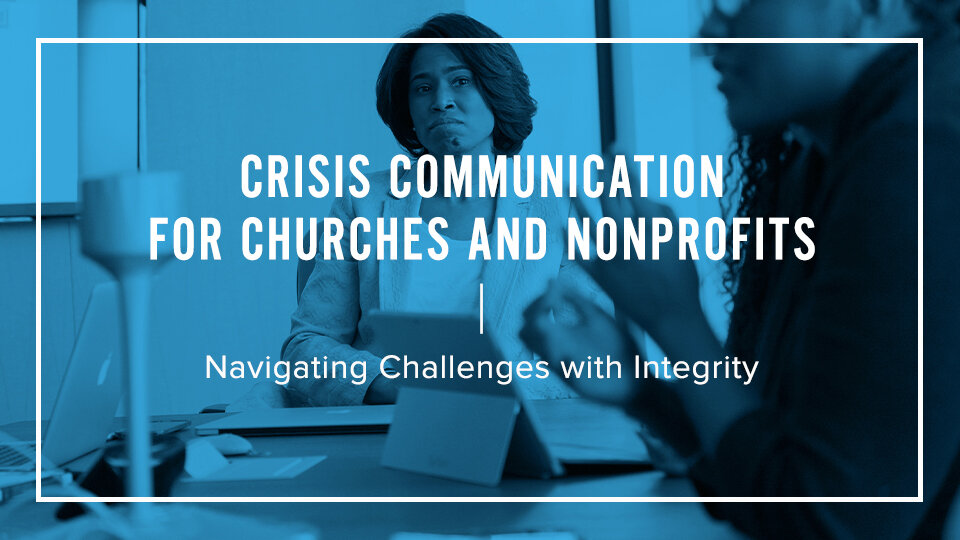Crisis Communication for Churches and Nonprofits: Navigating Challenges with Integrity
By Maurilio Amorim
In the life of any organization, crises are inevitable. For nonprofits and churches, effective crisis communication is not just about managing a situation; it's about maintaining trust, demonstrating faith, and continuing the mission amidst adversity.
Over the years, I have helped churches and nonprofits create and deploy communication strategies during a crisis. Let me share a few things that I have learned along the way.
Understanding Crisis Communication
What is Crisis Communication?
Crisis communication involves an organization's methods to communicate with its stakeholders during and after a crisis. It's crucial for protecting your nonprofit's reputation, maintaining trust, and ensuring transparency.
Common Crises in Nonprofits
Crises can come in many forms, including financial mismanagement, scandals or misconduct, natural disasters, negative publicity, and even data breaches. Being prepared for these scenarios is critical to effective crisis management.
Preparing for a Crisis
Building a Crisis Team
Your crisis team should know their roles and responsibilities. Identify a spokesperson who can communicate effectively and with empathy, embodying the values and mission of your organization.
Responding to a Crisis
Immediate Response
In the initial stages of a crisis, acknowledge it as soon as possible. Gather all the facts and communicate quickly and transparently. Delay or misinformation can worsen the situation, so acting swiftly and accurately is crucial.
Key Communication Principles
- Honesty and Transparency: Be open about what happened and what steps are being taken to address the situation.
- Compassion and Empathy: Show understanding and care in your communications.
- Consistency: Ensure your message is consistent across all channels to avoid confusion.
Effective Communication Channels
Choosing the Right Channels
Use social media for quick updates, emails for detailed information, press releases for media, website updates for comprehensive statements, and direct communication for personal touch. Each channel serves a different purpose and audience.
Social Media Best Practices
- Monitor and Respond Promptly: Keep a close eye on your social media platforms and respond to queries quickly.
- Use Hashtags for Crisis Updates: Create a specific hashtag for your crisis to help stakeholders follow updates easily.
- Post Regular Updates: Keep your audience informed with regular updates to maintain transparency and trust.
Managing the Message
Crafting the Message
Your message should clearly explain what happened, what actions you're taking, how it affects stakeholders, and what they can do. Clarity and action-oriented communication are essential.
Example Template:
"We recently discovered [issue]. Here's what we know: [facts]. We are taking the following steps to address it: [actions]. This will impact our community by [effects]. Here's how you can help: [call to action]."
Post-Crisis Communication
Post-Crisis Actions
After the crisis, follow up with your stakeholders. Evaluate your response, adjust your plan as necessary, and focus on rebuilding trust through continued transparency and communication.
In crisis communication, transparency and empathy are crucial. By maintaining open, honest communication, your church or nonprofit can navigate crises effectively, maintaining trust and continuing its mission.
Remember, crises are inevitable, but with the right approach, they can be managed to uphold your organization's values and strengthen your bond with your community.
Feel free to reach out if you have any questions or need assistance in developing your crisis communication plan. We're here to help your organization navigate challenges with faith and integrity.














